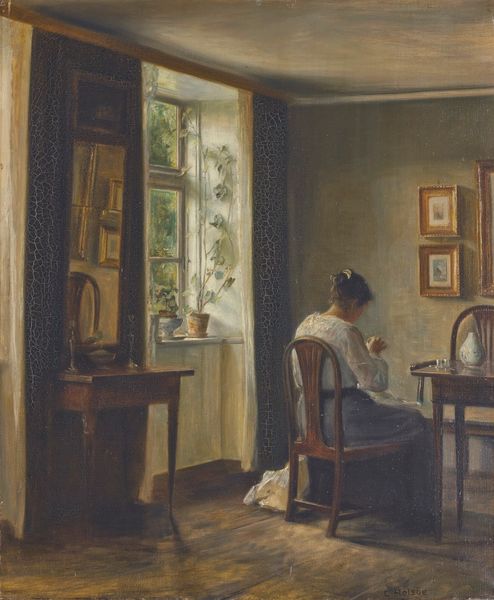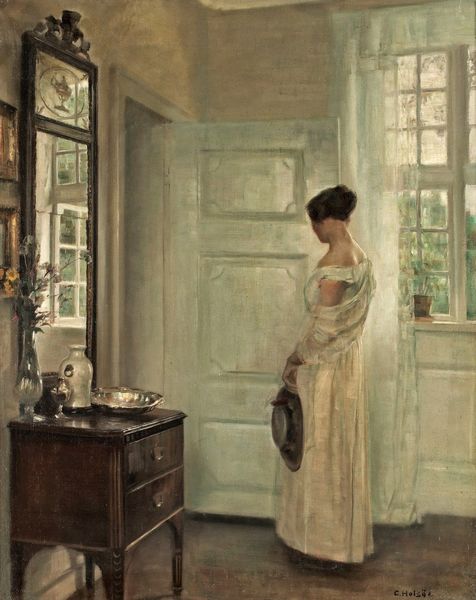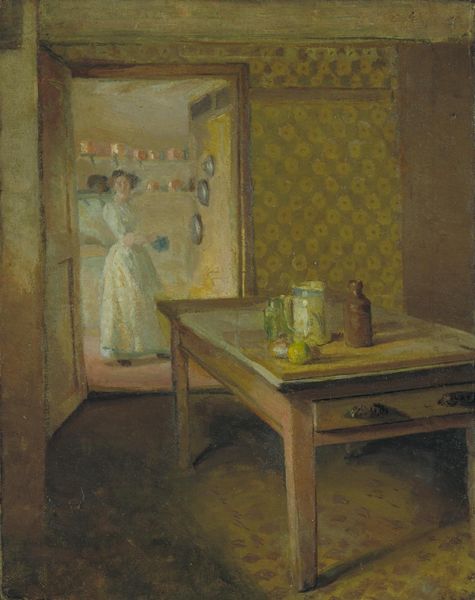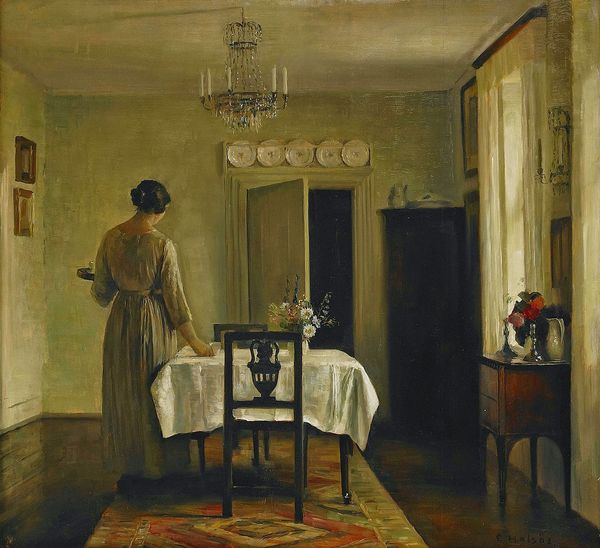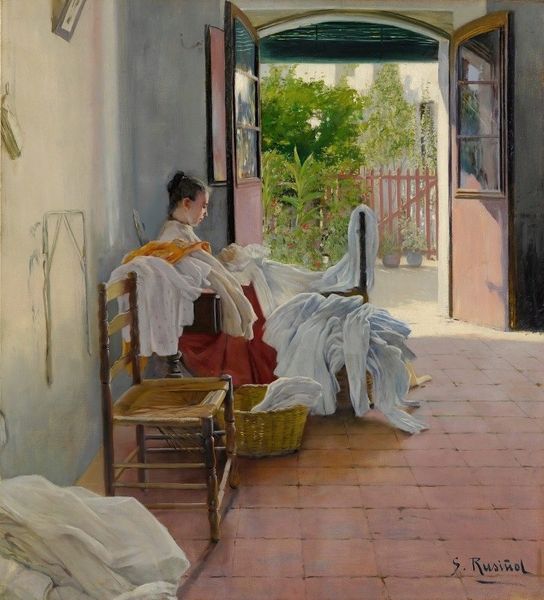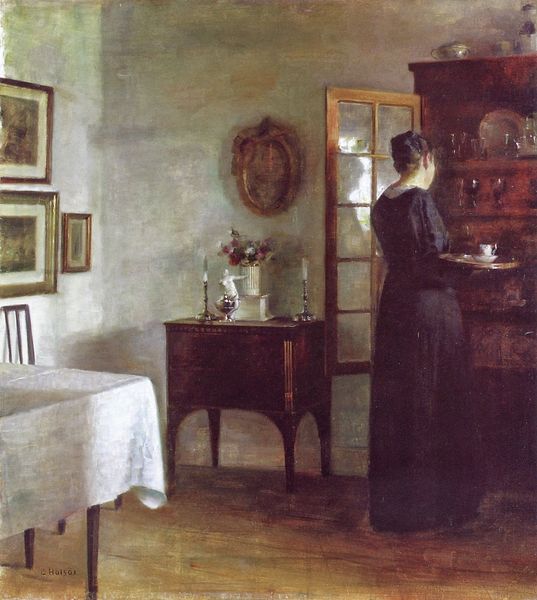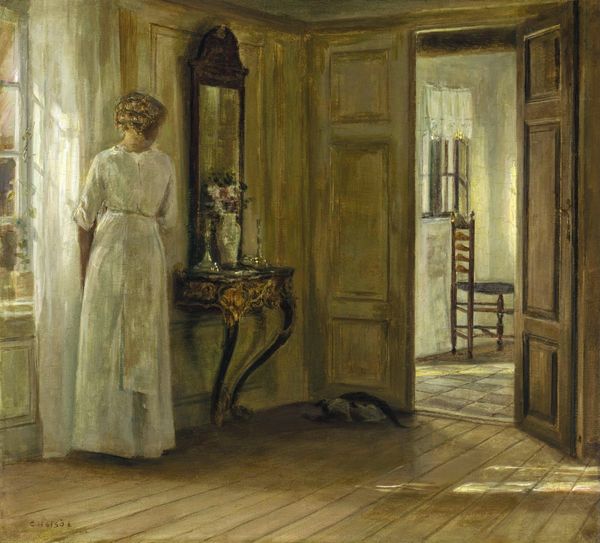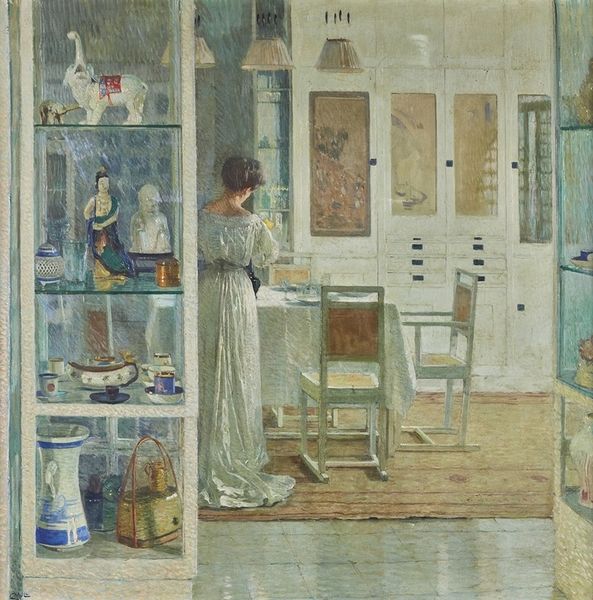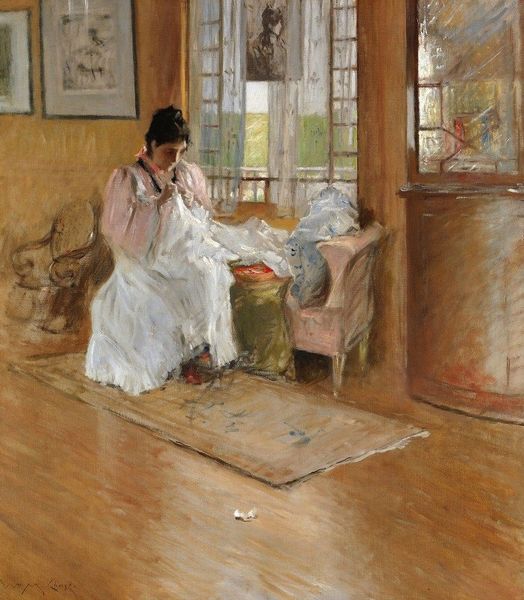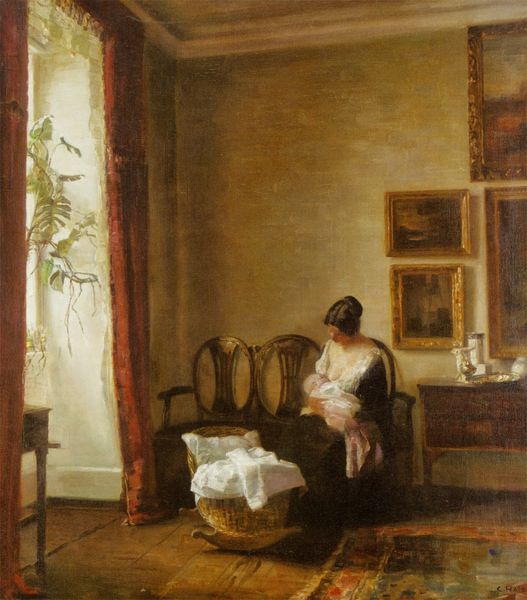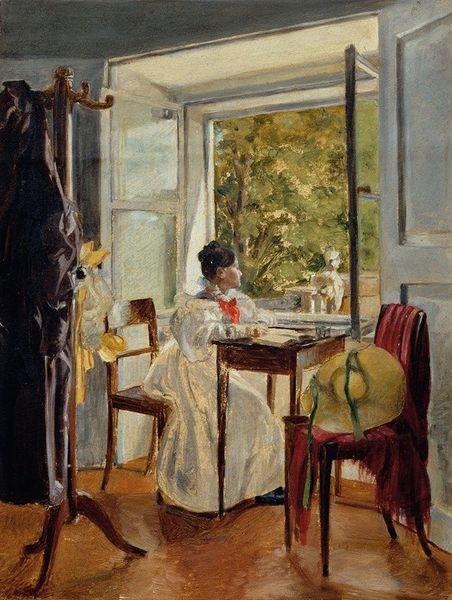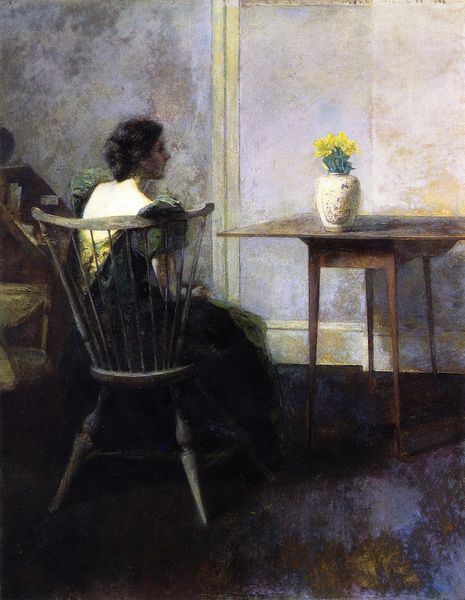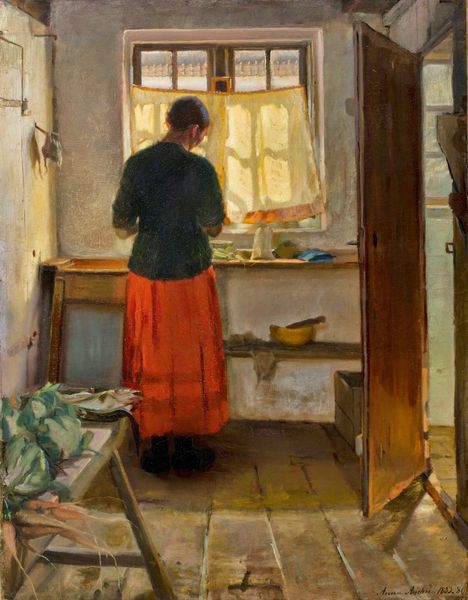
Copyright: Public Domain: Artvee
Curator: Let’s discuss Santiago Rusiñol's "Sitges Interior," created around 1894. It’s an oil painting depicting a domestic scene. Editor: It strikes me as a study in contrasts. The crisp light of the exterior versus the shadowed interior, and the rigid lines of the architecture softened by the figures. The color palette feels very muted, dominated by earthy tones with restrained accents of blue. Curator: Rusiñol was deeply interested in depicting the everyday life of the working class. The woman carrying what looks like food, the seated elder in the background, all speak to daily domestic labor and intergenerational relationships within a household. Editor: The composition creates an almost dreamlike depth. The eye is led from the large jar in the foreground, past the standing figure, through the doorway to the woman seated outside and onward. There's a wonderful use of linear perspective here. It is like stage setting with foreground, middle-ground and far distance planes, each anchored by figures that seem essential to its geometric rhythm. Curator: Absolutely. The emphasis on these ordinary subjects and his application of paint, it really bridges a gap between high art and depictions of everyday labour, questioning established artistic hierarchies. Look closely at his brushwork. It’s so tactile, conveying the textures of the ceramic, fabric and whitewashed walls. This reminds me of similar interest amongst the impressionists with whom he exhibited. Editor: The loose brushstrokes definitely imbue it with a sense of immediacy. Yet, there’s also a sense of tranquility; stillness. Rusiñol manages to capture the essence of a moment suspended in time, making the ephemeral feel almost permanent. Curator: And considering Rusiñol's own aristocratic background, it’s a social commentary of sorts. He brings these invisible labors of maintaining house and family, these traditional women's jobs, to the attention of the bourgeoise who benefit from it. Editor: Indeed, that awareness enriches the viewing experience significantly. Focusing on those aspects—composition, materiality, that interplay of shadow and light, adds layers of appreciation. Curator: Exactly. By contextualizing it within the social and economic structures of his time, it allows us a clearer insight into his artistic choices. Editor: What began as a surface-level impression transforms into an intricate exploration, then, of how form reflects its societal setting and conditions.
Comments
No comments
Be the first to comment and join the conversation on the ultimate creative platform.
